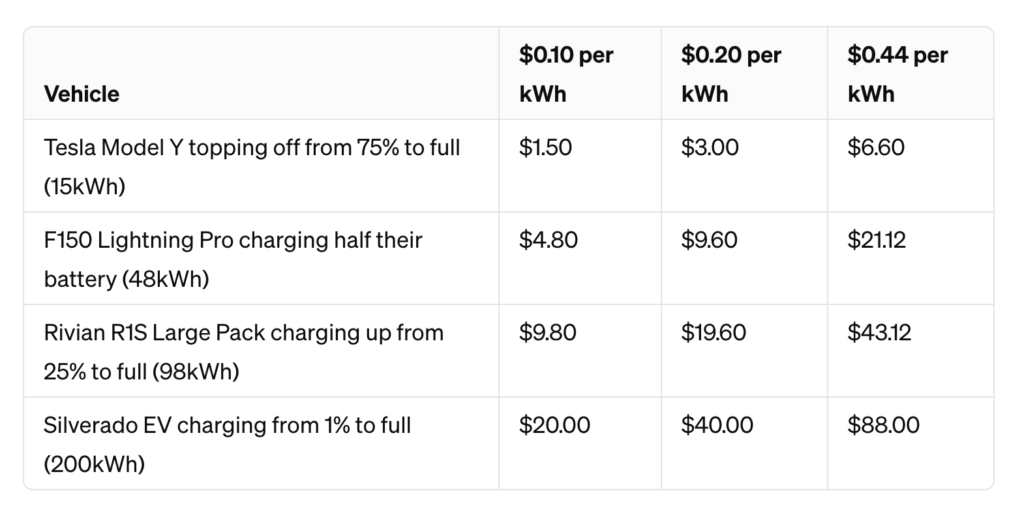“Why bother asking? Just plug in! I’m already paying for electricity.” These comments have been fairly common. In talking to RV Park owners we’ve come across the following 2 main concerns:
Concern 1: Old infrastructure is unable to deal with the high power draw
The key to understanding the problem here is that a big rig with 2 ACs (1500 watts each), a television (100 watt) and some small cooking appliances (400 watt), is using about 3500 watts. This is still less than half of what the average EV charger plugged into a 50 amp outlet uses (7700 watts).
Besides using more than 2x the energy of a Big Rig RV, it uses that energy constantly until the battery is full (generally about ~12 hours).
Recommendation for campers: In order to minimize strain on the RV park’s electrical system, we recommend turning down the charging speed setting as low as you can, or to use the Level 1 charger in the standard 20A household outlet. After all, if you aren’t leaving for another 2 days, there is no need to fill up your car in the first 12 hours.
Concern 2: Cost of electricity
Electricity rates vary quite a bit across states, and RV parks might be able to access lower industrial rates. The cost of a full charge depends on the size of the car’s battery pack, and how empty they are when they arrive. Here are some examples, from rates as low as 10 cents, to rates as high as 44 cents (California peak pricing residential rates).

As you can see, depending on the charge and rate, these dollar amounts can eat into an RV park’s margin quite a bit. Especially for customers staying just a single night.
Recommendation for campers
- Check the list first. If the park isn’t on there, call ahead and ask (and let us know what they say!).
- Offer to pay a surcharge to cover the charging cost if the RV Park is concerned about cost.
Recommendations for RV Park owners
Please see our recommendations for RV Park Owners here.
